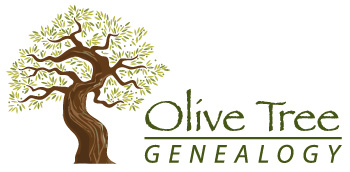It can be overwhelming when you search for something on eBay
Let's use the search term Guelph That's the city where my parents were born and where my dad's ancestors settled in the 1860s. So I'm always on the hunt for some bit of ephemera that might involve an ancestor or provide me with some interesting background on the places they lived or worked.
 |
| 394 Results! |
SEARCHING WITHIN CATEGORIES
You might also want to search within a specific category such as "Collectibles" rather than the entire eBay website. I don't like to do this as I find I miss items if a seller doesn't put the item in the category I think it will be found.
SEARCHING WITHIN ITEM DESCRIPTIONS
If I search within titles (the default search) and am not finding what I want, I will often include my search to the item description. That is easily done by ticking the radio checkbox under the green Search button. This allows for a seller not using the word Guelph in her item title but using it in the description. For example I once bid on and won a beautiful 1930s watercolour of a river and bridge in Guelph. The word Guelph was not in the title but it was in the item description.
ADVANCED SEARCH
 |
| Advanced Search on eBay |
Now you can choose from specific items, or buyers or from an eBay store. Those choices are fairly intuitive on how to use them so I won't go into detail here.
DROP-DOWN LIST OF CRITERIA CHOICES
Let's discuss the choices of criteria you can choose in the drop down list. Let's pretend you wanted to find yearbooks for Guelph. You might enter your keywords Guelph, yearbook
All words, any order: Search in titles containing all the words you've listed, in any order. The titles would have to contain both your keywords.
Any words, any order: Search in titles containing any of the words you've listed, in any order. This would result in hits for any title containing the word yearbook or Guelph So you would get a lot of hits that didn't apply such as "Toronto yearbook" or "Fair Dinkum Yearbook"
Exact words, exact order: As this choice says, you are searching in titles containing the exact keywords in the exact order you gave them. in this search, you would get results if the title contained "Guelph yearbook 1932" but not if the title was "Yearbook Guelph 1932"
Exact words, any order: This would give you results for a title "Yearbook Guelph 1932"
EXCLUDING KEYWORDS
You can also EXCLUDE words from your search. So I could use Guelph as a keyword but exclude the word sports or hockey or baseball. Perhaps I definitely don't want a Guelph souvenir spoon. I can exclude the word spoon.
BOOLEAN SEARCH OPERATORS
This is another option for searching. Using the generic search box at the top of eBay pages I can use several different search operators to refine my search.
Quotation Marks: These tell the search engines to search for that exact phrase. So I might search for "Guelph postcards" to find any titles with that exact wording. But I could also use "Guelph" postcards and this will find titles with the word Guelph and the word postcards but there might be other words in between. So it would find titles using Postcards of Speed River in Guelph
Asterisk (*): This is a wild card and allows you to search for an item such as Guelph Yearbook* This will bring up the plural of yearbook as well as the singular. It would also bring up any title with the partial word book such as bookshelf or bookmark.
Commas and Brackets: I can use commas to separate keywords inside brackets, such as (Guelph, postcard). This brings up titles containing those keywords in any order
Minus sign: This acts as an exclusion operator and will bring up titles containing your keywords but not containing your exclusion word. So for example Guelph -hockey would eliminate any titles that are hockey related for Guelph items.
So there you have it - different ways to make your search for genealogy items on eBay


















